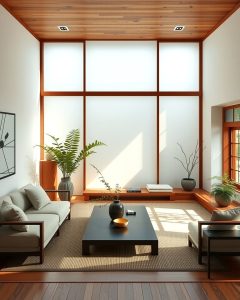Imagine entering a serene atmosphere where simplicity meets sophistication, and nature harmonizes with design. The essence of Japanese-style living rooms lies in their philosophy of cultivating peace and calm within the home. Rooted in centuries-old traditions, these spaces embody minimalism, natural textures, and a profound connection to the environment.
Whether you’re drawn to the understated elegance of minimalist decor or the meditative presence of an indoor Zen garden, Japanese design offers boundless opportunities to transform your living room into a tranquil retreat. Ready to explore how you can infuse this enduring aesthetic into your own space? Discover 25 Japanese-style living room ideas that embody serenity, balance, and timeless refinement for your home.
Minimalist Zen Aesthetic
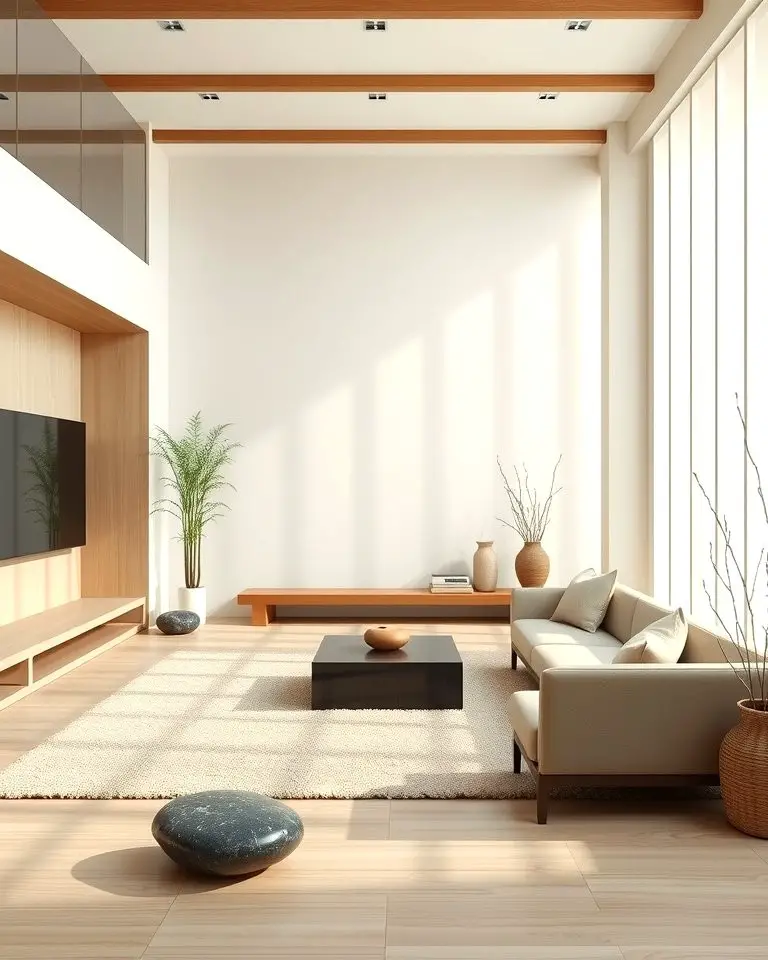
At the core of Japanese design philosophy is the concept of minimalism, which gives rise to the serene and tranquil Zen aesthetic. By embracing simplicity through furniture, color palette, and visual lines, you can craft an atmosphere that feels weightless and calming. The deliberate absence of clutter allows the mind to unwind, making it an ideal setting for a peaceful living room retreat. To further amplify this connection to nature, incorporate natural elements such as bamboo or stone.
In essence, the minimalist Zen style cultivates a harmonious and restful environment, perfect for unwinding and rejuvenating.
Use of Tatami Mats
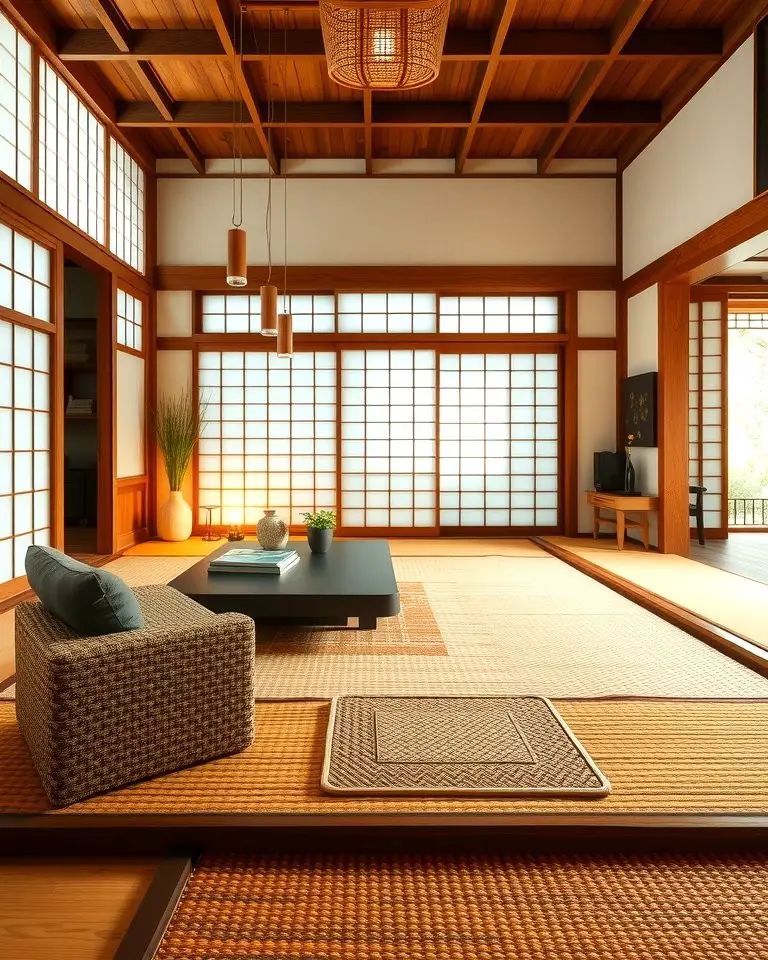
Harmonizing a Japanese-inspired living space with traditional tatami mats is a recipe for authenticity and warmth. Crafted from intricately woven straw, these versatile floor coverings transcend functionality by offering seating or serving as the foundation for low-lying furniture. By incorporating tatami mats into your design, you introduce an organic feel that blends seamlessly with its surroundings.
The natural texture of these mats invites tactile exploration, elevating the room’s aesthetic to a new level. With proper maintenance, tatami mats can remain a stunning focal point in your home for years to come, guaranteeing a timeless and beautiful living space.
Sliding Shoji Screens
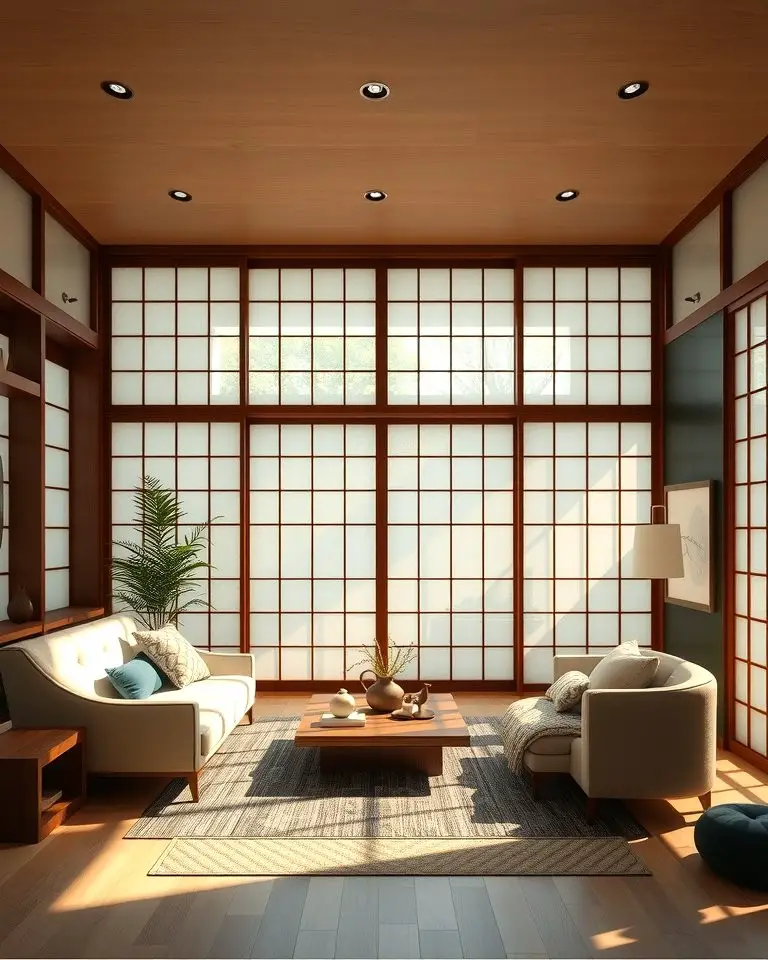
In Japanese interiors, Shoji screens are an integral component of the aesthetic, comprising translucent paper panels and wooden frames. These sliding screens not only conserve space but also diffuse soft light, generating a warm ambiance that invites relaxation. As room dividers or window treatments, they bring versatility to living room designs. Beyond their practical utility, Shoji screens embody refined elegance and understated simplicity, effortlessly harmonizing functionality with beauty.
Their presence has the effect of instantly transforming any space into a serene sanctuary.
Incorporating Natural Wood
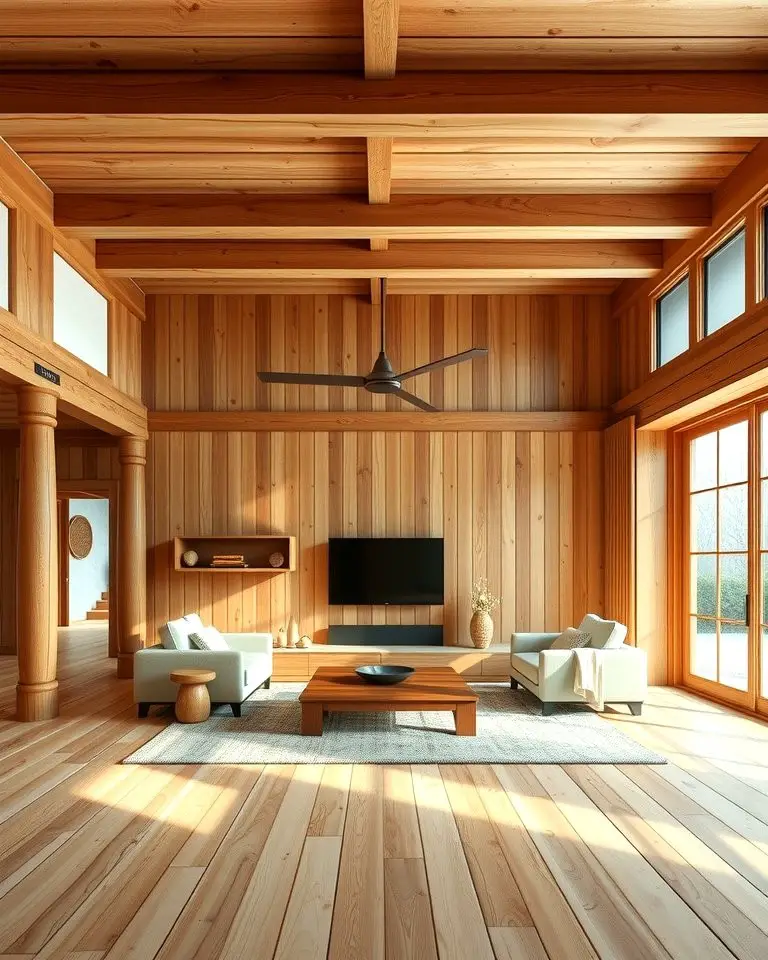
In Japanese design, natural wood plays a fundamental role in crafting warm and sophisticated spaces. The incorporation of wooden beams, flooring, and furniture brings an undeniable organic charm to the living room, imbuing it with a timeless quality. Light-hued woods such as cypress or pine are commonly used for their bright and airy ambiance. Moreover, the use of untreated or minimally processed wood strengthens the room’s connection to nature, fostering a sense of comfort and authenticity.
Low Furniture Design

In Japanese-style living rooms, low-lying furniture is a hallmark of the space. By placing sofas and tables at ground level, this design approach cultivates a sense of connection to the earth, promoting relaxation and grounding. Beyond their visual appeal, these low-profile pieces also encourage better posture and create an airy, open atmosphere. When paired with cushions or floor seating, they amplify comfort.
Furthermore, the streamlined aesthetic of low furniture harmonizes with Japanese interior principles, yielding a cohesive and calming environment that embodies simplicity and serenity.
Neutral and Earthy Color Palette

Japanese-style living rooms are characterized by a calming and earthy color scheme, which provides a serene foundation. A palette that includes beige, cream, soft brown, and muted green hues creates a harmonious and understated design. These natural tones not only evoke a sense of balance but also bring the outdoors in, allowing for easy incorporation of wood accents or lush plants.
By incorporating these earthy shades into walls, textiles, and furniture, you can create a soothing environment that is both calming and inviting.
Indoor Zen Garden Features
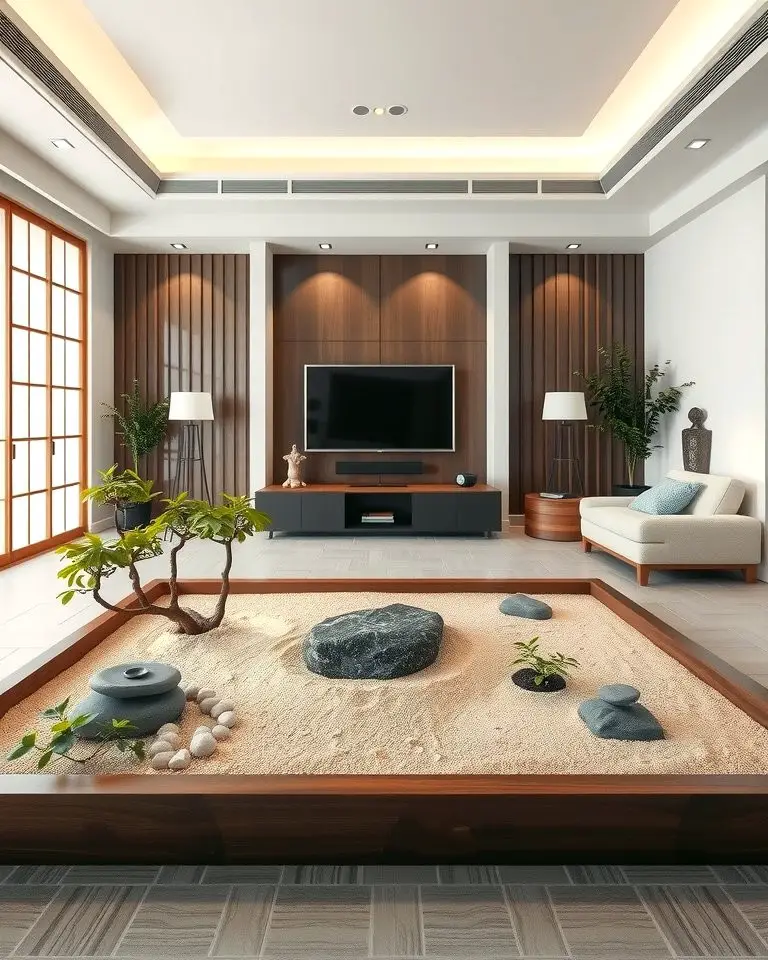
Transform your living space into a serene oasis by incorporating an indoor Zen garden. This meditative focal point combines the soothing elements of sand, stones, and small plants to create a harmonious atmosphere. The beauty of these gardens lies in their adaptability – they can be easily customized and maintained, making them a practical yet impactful addition to your home.
As you place your feet on the soft sand or run your fingers over the smooth stones, you’ll find yourself drawn into a state of mindfulness and relaxation, perfectly aligning with the Japanese principles of harmony that govern Zen design. Whether placed in a cozy corner or serving as a central feature, an indoor Zen garden will transform your living room into a peaceful retreat where you can unwind and rejuvenate.
Fusuma Panels for Versatility
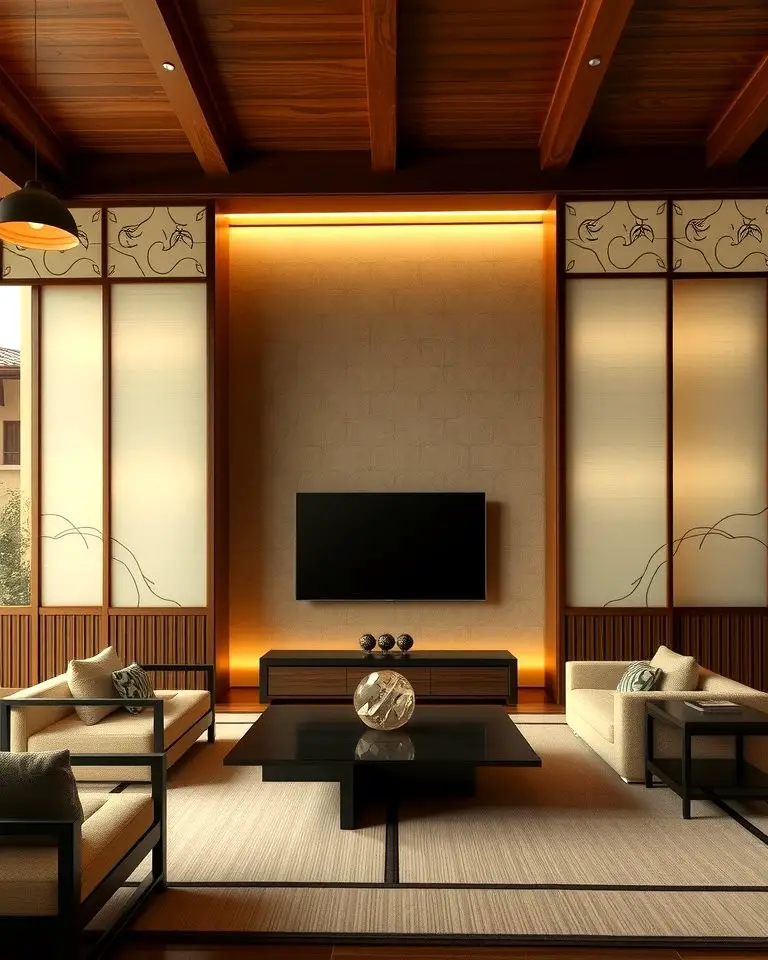
Japanese-style interiors are often characterized by the incorporation of fusuma panels, which serve as sliding doors or partitions. These elegant elements bring a sense of flexibility and adaptability to a room’s layout, allowing for seamless reconfiguration and manipulation of space. Whether used to create private areas or open up a room for social gatherings, fusuma panels cater to diverse needs while maintaining their lightweight yet durable design.
Furthermore, these panels not only provide functional benefits but also elevate the aesthetic appeal of a room, fostering a harmonious and versatile living environment that seamlessly blends form and function.
Bonsai Trees as Decor

Incorporating a bonsai tree into your Japanese-style living room design brings together the serene qualities of nature and the artistic flair of miniature gardening. As a symbol of balance, patience, and harmony, these tiny trees create a meaningful centerpiece that encourages mindfulness and contemplation. Placed on a low table or shelf, a bonsai tree becomes an alluring focal point that adds depth and visual interest to the space without overwhelming it.
The intricate shapes and textures of the tree also reflect the attention to detail and appreciation for nature that defines Japanese design principles.
Soft Ambient Lighting
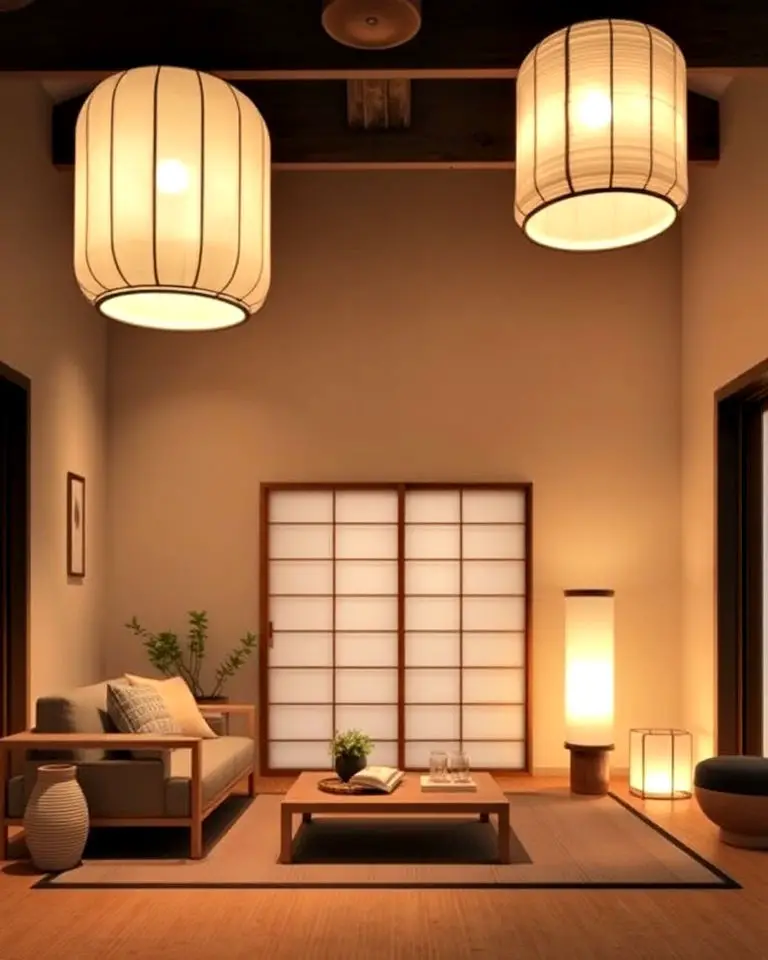
In Japanese-style living rooms, soft ambient lighting plays a crucial role in creating a cozy and inviting atmosphere. To achieve this, consider using paper lanterns, floor lamps, or recessed lighting to produce a warm and diffused glow that promotes relaxation and comfort. This type of lighting also draws attention to natural materials and textures, adding depth to the room’s design.
Opt for fixtures with simple, clean lines to maintain the minimalist aesthetic, while ensuring the lighting not only sets the mood but also enhances the overall functionality of the space.
Use of Natural Fabrics
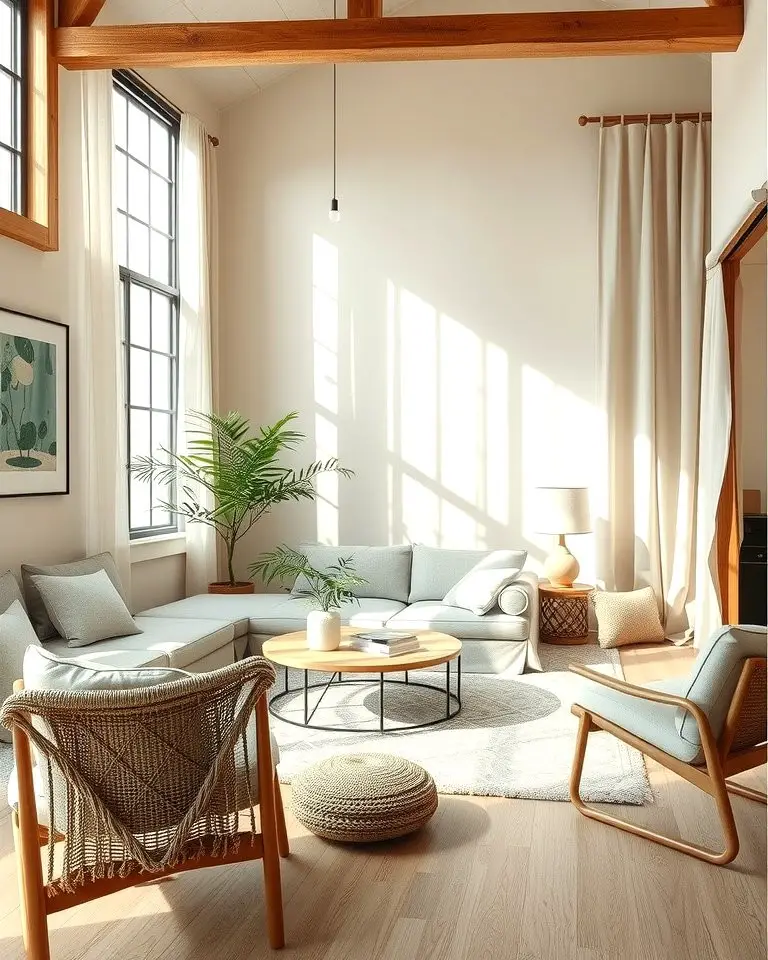
Incorporating natural fabrics such as cotton, linen, or silk is crucial for creating an authentic Japanese-style living room. These materials imbue the space with a sense of softness and warmth while maintaining a minimalist aesthetic. The use of neutral-toned curtains, cushions, and upholstery in subtle patterns further enhances the overall design. Furthermore, the breathability and durability of natural fabrics guarantee long-term comfort and practicality.
By seamlessly integrating these textiles into your living space, you can create an environment that exudes warmth, serenity, and harmony, reflecting the traditional Japanese values of simplicity and elegance.
Incorporating Water Features
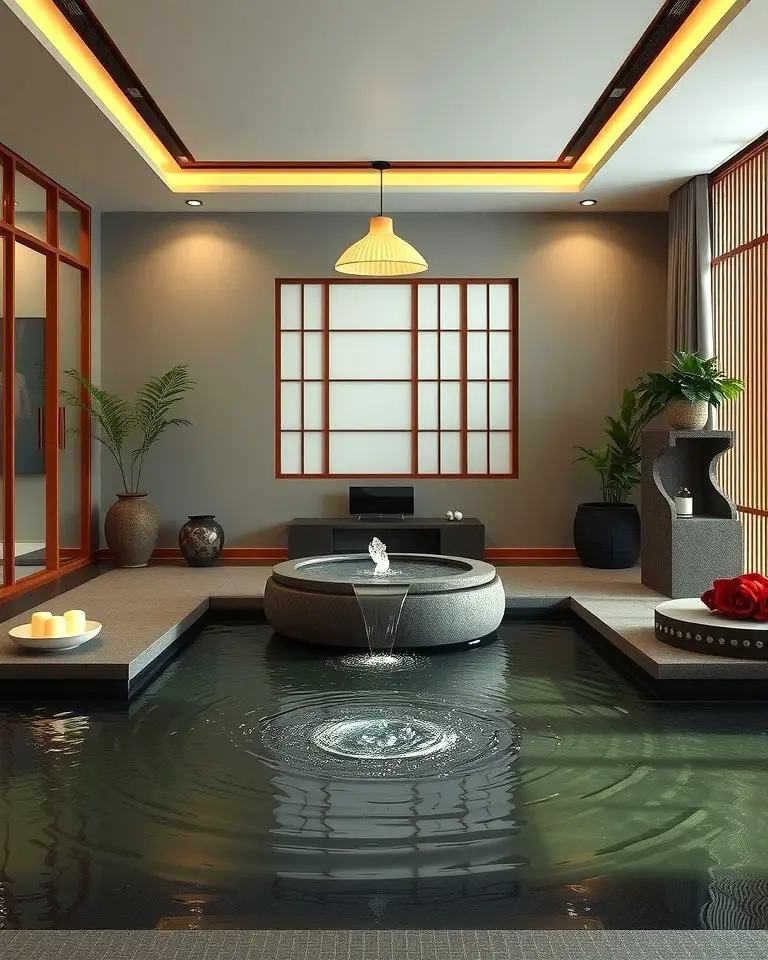
Incorporating water features into your Japanese-style living room can be a game-changer. The soft gurgling of small fountains or the gentle ripples of indoor ponds create a serene atmosphere that promotes relaxation and encourages mindfulness. Whether you opt for a compact tabletop fountain or a more elaborate built-in water wall, the addition of water elements brings the outdoors in, fostering a deeper connection to nature.
This harmonious blend of water and tranquility also creates a stunning focal point, drawing attention away from distractions and towards the peaceful ambiance. Ultimately, incorporating water features into your space is an excellent way to cultivate a balanced and calming environment perfect for unwinding.
Floor Cushions for Comfort
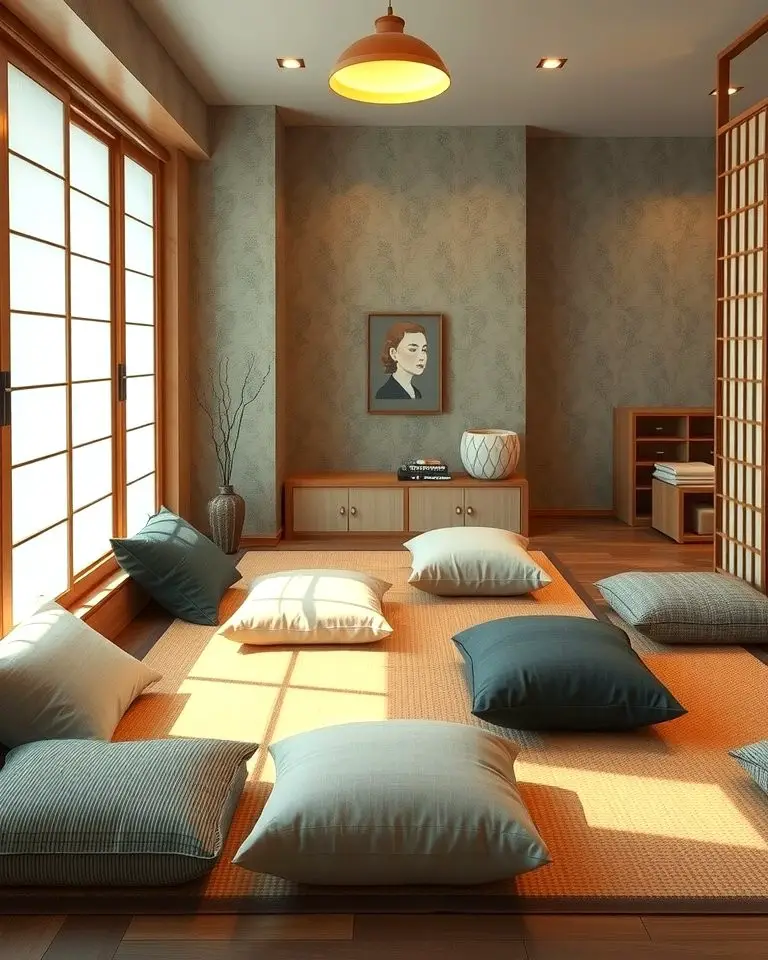
In the midst of Japanese-inspired interior design, floor cushions, or zabuton, occupy a special place. These understated yet inviting pieces of furniture seamlessly blend comfort with aesthetics, creating an atmosphere that’s at once relaxed and grounded. With their adaptable nature – available in various sizes and hues – they can be effortlessly rearranged to suit any setting, or stored away when not in use.
By promoting a connection to the earth, floor cushions foster a sense of calm and informality, making them an excellent addition to any living space. Whether used as a standalone seating option or paired with low-profile furniture, zabuton brings both warmth and authenticity to your home’s design.
Open Layout Design
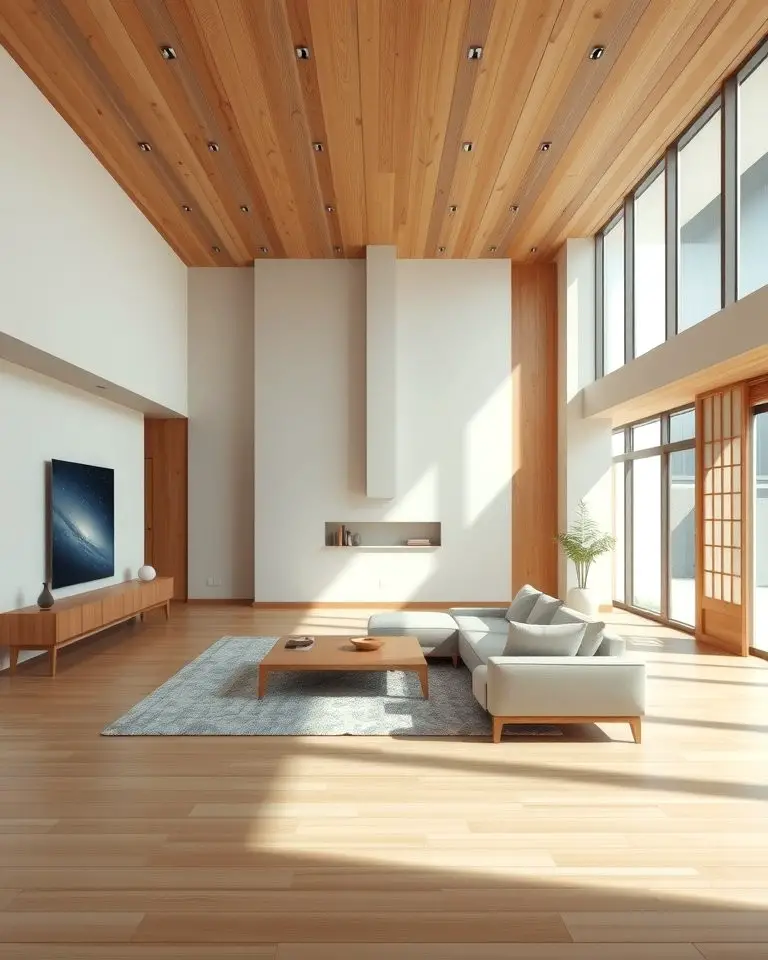
In Japanese interior design, the concept of an open layout is synonymous with creating a sense of freedom and connection. By reducing the presence of walls and barriers, the space is transformed into a fluid and spacious area that encourages a seamless flow between different zones. This design approach not only fosters a physical connection but also promotes visual harmony.
The incorporation of sliding panels or screens adds flexibility to the layout while maintaining the openness, allowing for a greater sense of flow and continuity. Furthermore, an open layout design can also enhance natural light and ventilation, resulting in a brighter and more inviting atmosphere. Ultimately, this design style embodies simplicity and harmony, creating a peaceful and serene environment.
Traditional Japanese Artwork
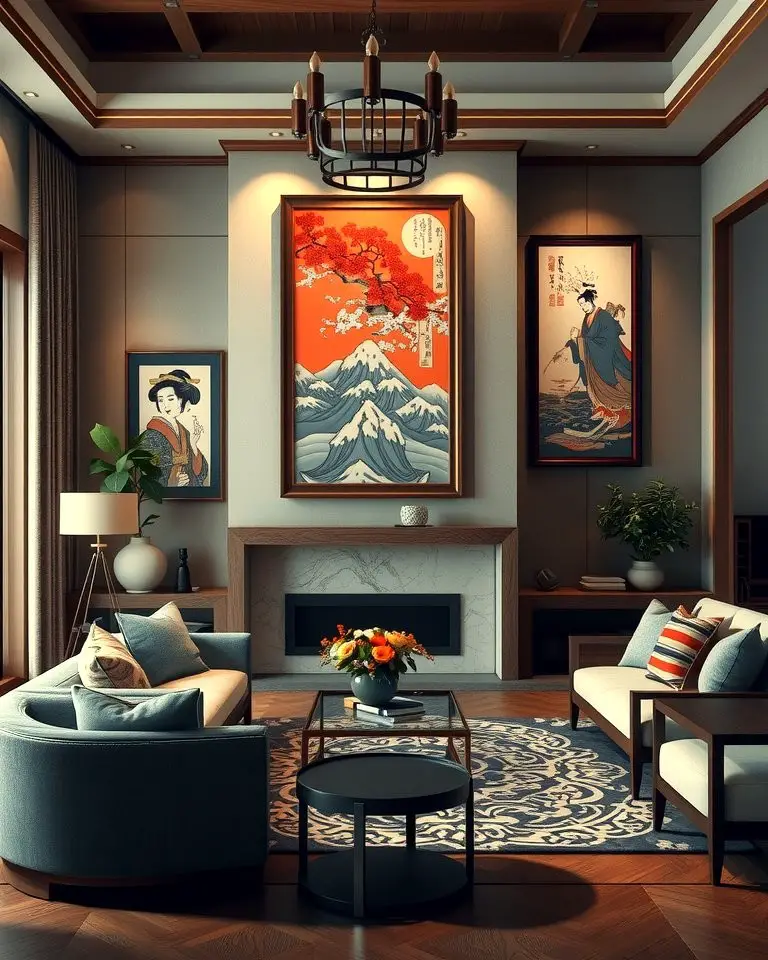
Elevate your living room with the cultural significance of traditional Japanese artwork, such as ukiyo-e prints or calligraphy. These art pieces beautifully capture the harmony between humans and nature through stunning depictions of cherry blossoms, landscapes, and other natural wonders. Whether displayed on walls or within a decorative alcove, they serve as striking focal points that add depth and character to your space.
The subtle color palette and intricate details of these artworks also seamlessly blend with the minimalist aesthetic commonly found in Japanese interiors. By incorporating traditional artwork, you not only enhance the visual appeal of your room but also pay tribute to Japan’s rich artistic heritage.
Bamboo Accents
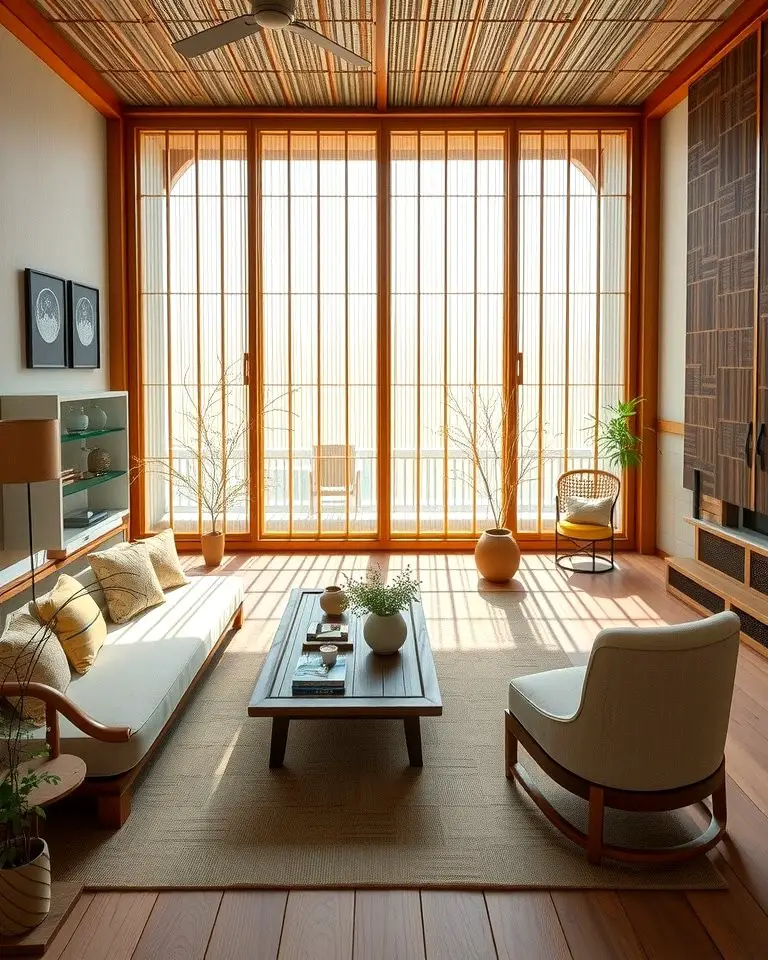
Incorporating bamboo accents into a Japanese-style living room brings an undeniable touch of natural sophistication. The versatile material seamlessly integrates into furniture, blinds, or decorative items, injecting texture and warmth into the space. Its lightweight yet durable nature makes it an ideal choice for various applications. Moreover, bamboo’s eco-friendly credentials align with design principles prioritizing sustainability.
By incorporating these elements, you create a harmonious balance between indoor and outdoor spaces, perfecting the room’s connection to nature while maintaining a minimalist essence. These thoughtful touches infuse the space with character and authenticity, fostering a serene atmosphere.
Raised Platforms for Seating
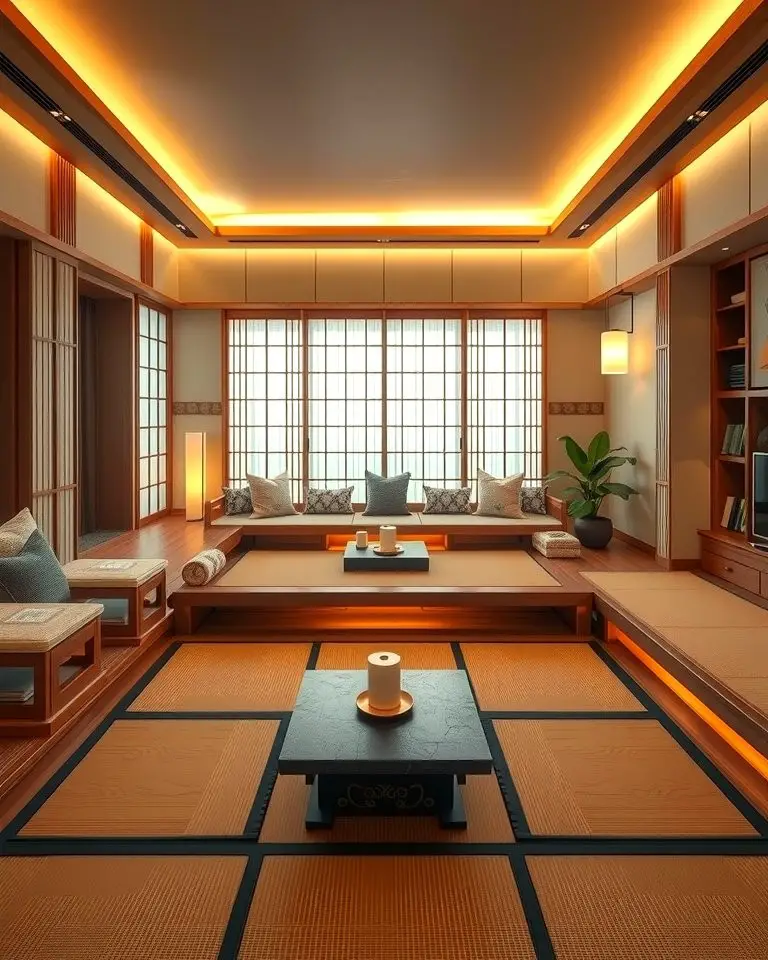
In Japanese-style living rooms, raised platforms, often referred to as tatami platforms, serve as a defining characteristic. By creating a designated seating area, these platforms introduce depth and visual interest to the space. Covered in tatami mats or cushions, they craft a cozy atmosphere perfect for unwinding or socializing with friends. Moreover, the raised platform helps define distinct zones within an open layout, allowing for a more intentional use of space.
Furthermore, its design thoughtfully encourages traditional floor-level seating, thereby preserving the room’s cultural authenticity while seamlessly blending form and function.
Low-Seating Arrangements for a Traditional Aesthetic
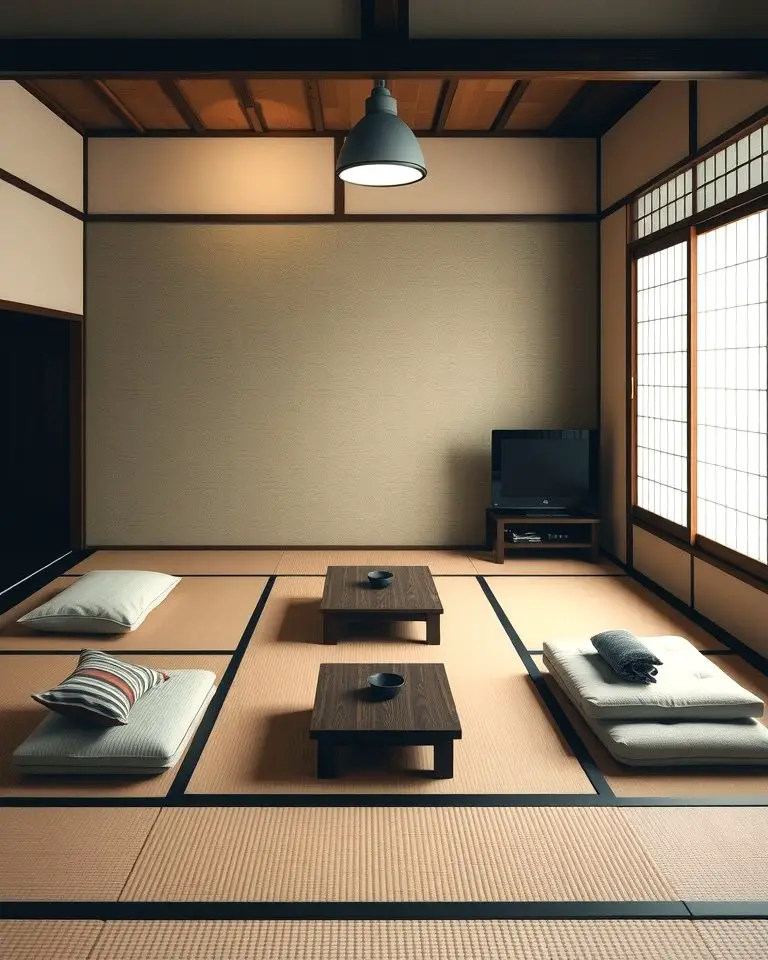
Incorporating traditional Japanese elements into your living room design can create a unique and inviting atmosphere. One key feature is the use of low-seating arrangements, which can be achieved through tatami mats, floor cushions, or low wooden tables. This approach not only promotes a sense of coziness and intimacy but also encourages mindfulness and simplicity by fostering a connection with the space. Furthermore, these designs are often space-saving and well-suited for compact rooms.
To complete the look, pair these pieces with neutral tones and minimalist decor to create a serene and calming ambiance that embodies the essence of Japanese-inspired design.
Shoji Screens for Functional Elegance
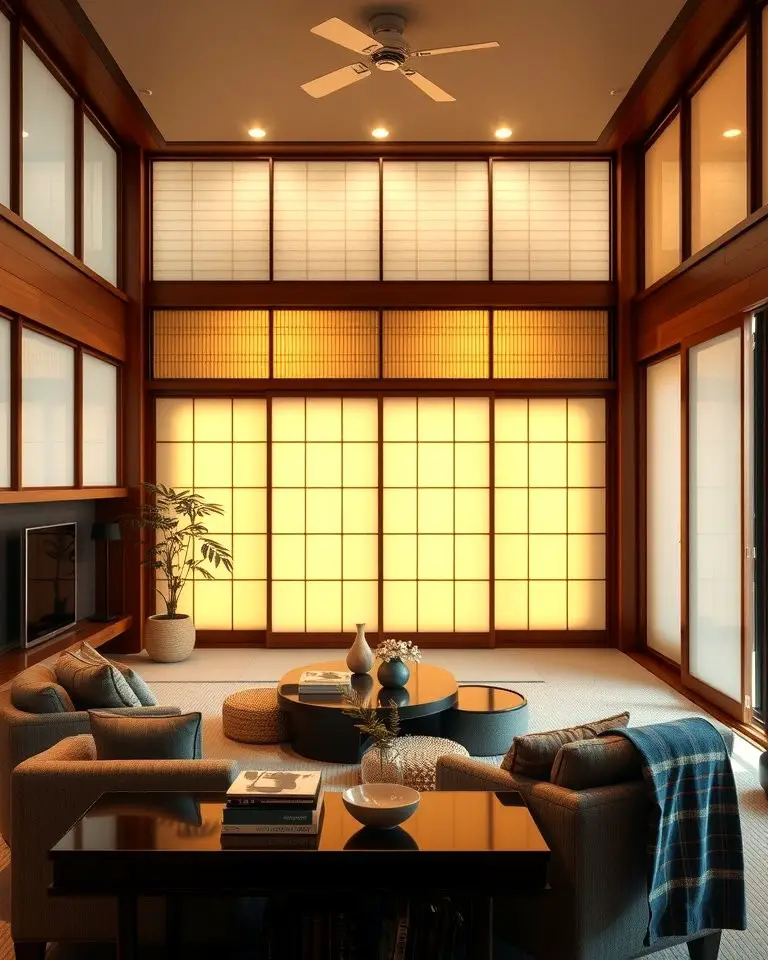
Japanese Shoji screens are a staple of traditional interior design, characterized by their delicate translucent panels and wooden frames. Beyond their aesthetic appeal, these sliding screens also offer practical benefits, such as creating intimate spaces or providing privacy while still allowing natural light to filter through. Their lightweight construction allows for effortless reconfiguration of rooms, making them an ideal addition to modern homes seeking a touch of Japanese elegance.
Furthermore, the soft, diffused glow they cast creates a serene ambiance, masterfully combining functionality and beauty in any space.
Tokonoma Alcove for Artistic Displays
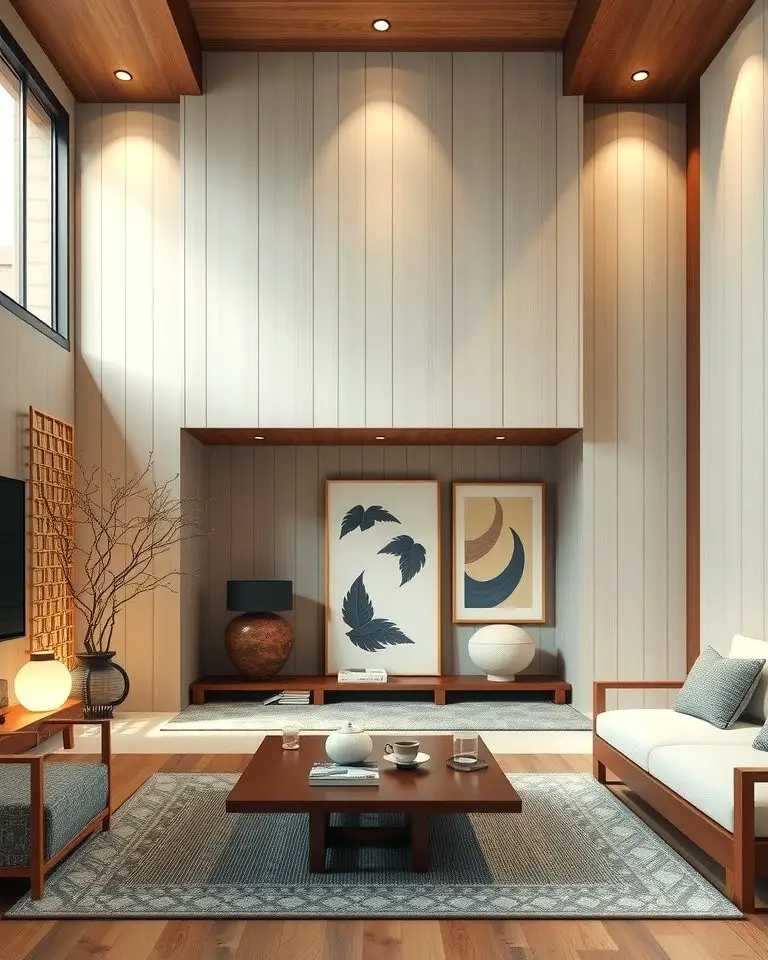
In traditional Japanese rooms, the Tokonoma alcove plays a vital role by providing a designated area to highlight meaningful objects or art pieces. The simplicity of this feature allows each displayed item to take center stage, creating a sense of harmony and intentionality. Often adorned with delicate scrolls, vases, or ikebana arrangements, the Tokonoma serves as a focal point that reflects an individual’s personal taste and cultural appreciation.
By incorporating a Tokonoma into your living room, you can add a touch of understated elegance while honoring the rich traditions of Japanese design.
Sliding Doors to Maximize Space
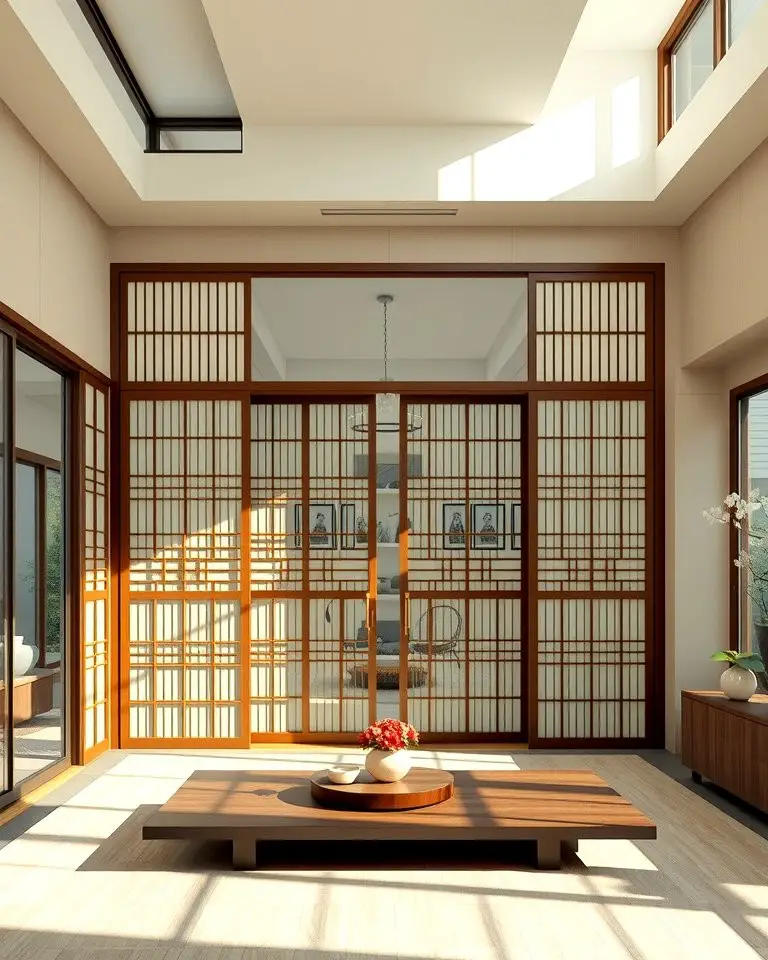
Incorporating Japanese design elements into your home can be achieved through the use of sliding doors, also known as fusuma. Unlike traditional hinged doors, these practical and stylish barriers offer a space-saving solution for separating or connecting areas within a room. The versatility of fusuma lies not only in their ability to create separate spaces, but also in their capacity to subtly influence the ambiance of the surrounding environment.
With surfaces that can feature neutral tones or intricate patterns, fusuma add an element of understated elegance to any living space. Furthermore, by allowing for improved airflow and light diffusion, these sliding doors contribute to a sense of openness and airiness within the room. By incorporating fusuma into your design, you are able to merge functionality with traditional Japanese style, creating a harmonious blend of form and function.
Natural Lighting to Enhance Serenity
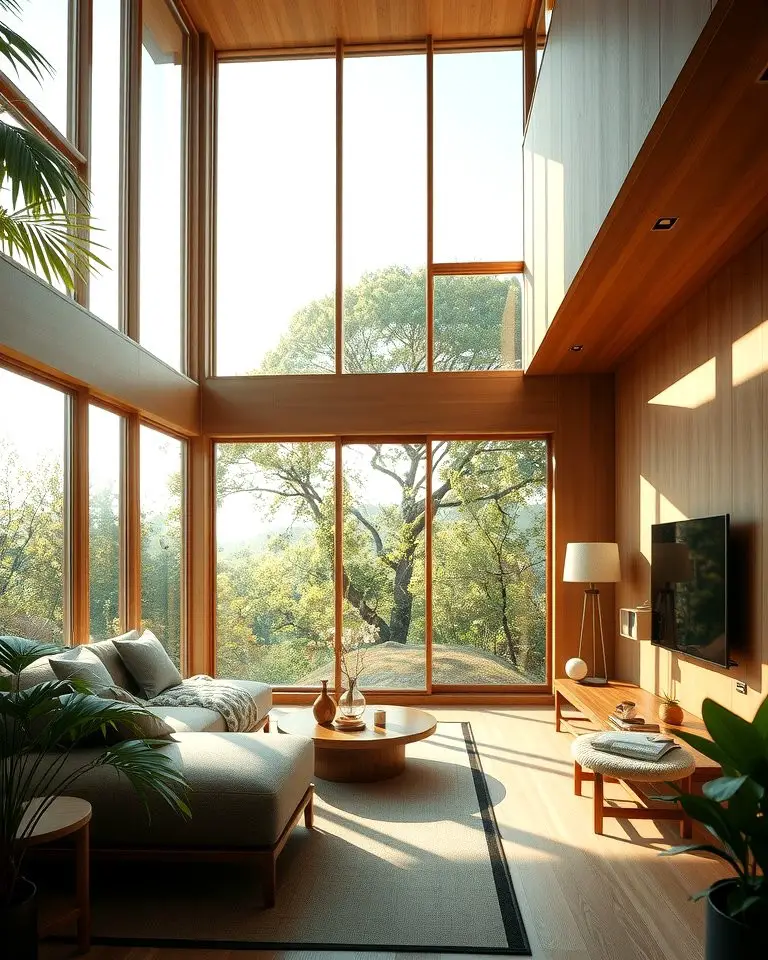
In Japanese living room design, the gentle warmth of natural lighting is instrumental in fostering a serene ambiance. To achieve this, designers frequently incorporate large windows, skylights, or sliding glass doors that seamlessly integrate the indoors with the outdoors. As sunlight pours in, it beautifully highlights the textures and hues of wood, tatami, and other organic materials, elevating the overall aesthetic.
Moreover, by harnessing natural lighting, you not only contribute to a more energy-efficient space but also create an atmosphere that embodies the fundamental principles of Japanese design – harmony and balance.
Minimalist Furniture for a Clean Look
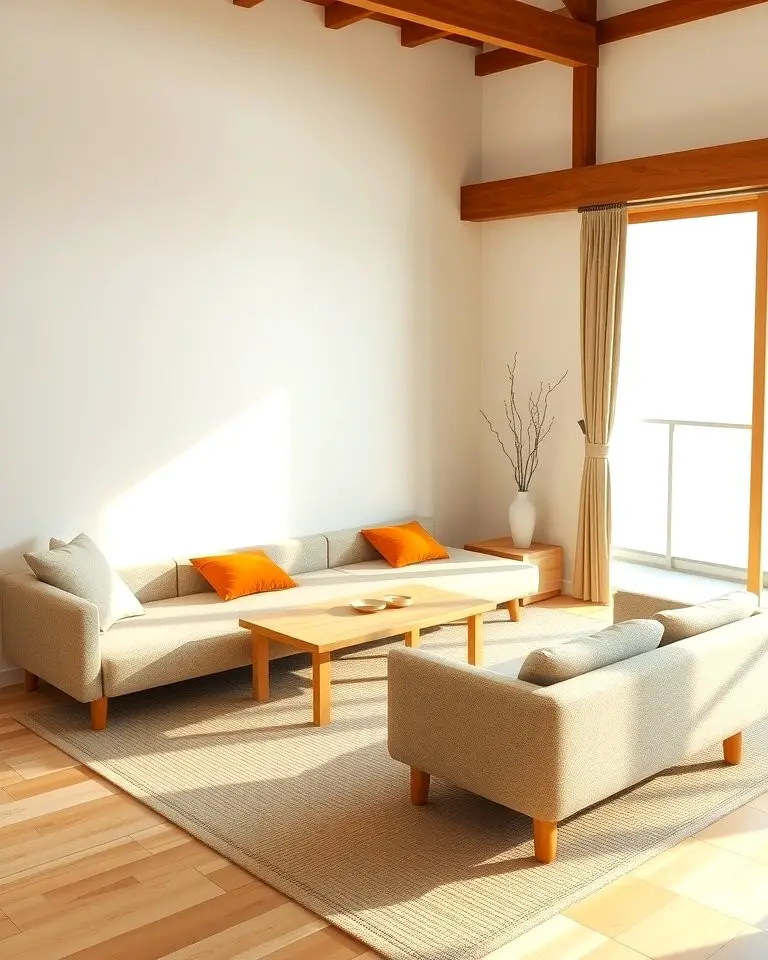
In Japan’s living spaces, minimalist furniture takes center stage, prioritizing purposefulness and visual harmony over lavishness. The understated presence of low-profile sofas, rustic wooden tables, and streamlined shelving units fosters a serene atmosphere free from clutter’s suffocating grasp. The crisp lines and muted hues of minimalist furniture work in tandem to create an illusion of expansiveness, even within confined quarters.
By embracing quality over quantity, this aesthetic embodies the essence of Japan’s philosophy on simplicity, where mindfulness and appreciation for life’s fundamentals are paramount.
Indoor Zen Garden for a Natural Touch
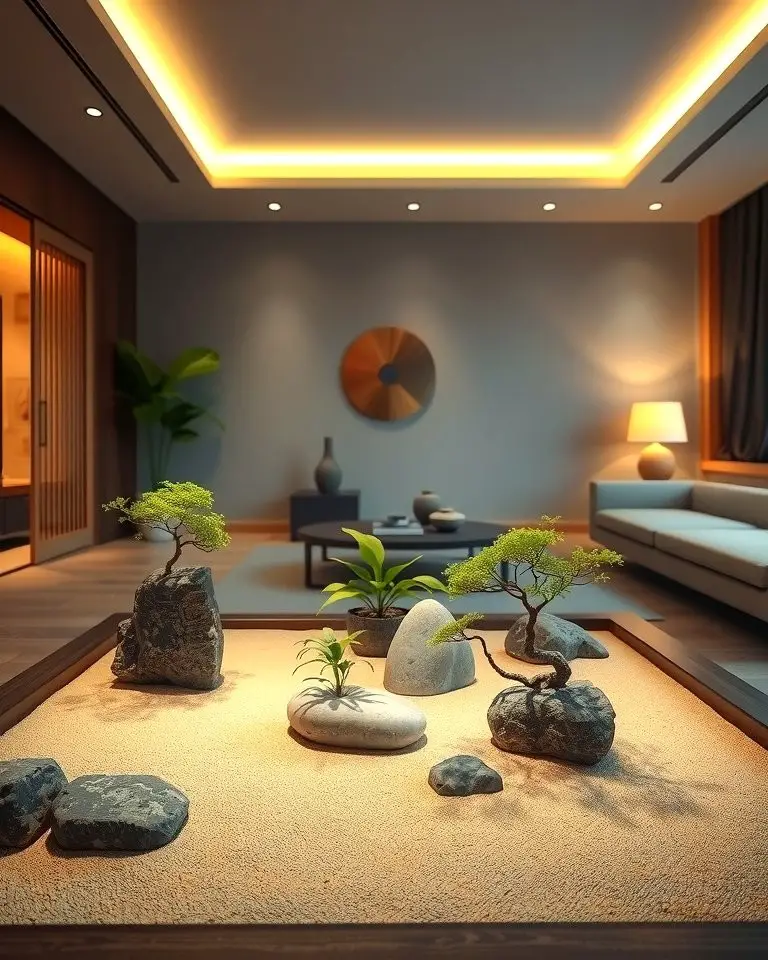
Transform your living room into a serene oasis with an indoor Zen garden, a thoughtful blend of natural elements that evoke the tranquility of Japanese culture. This unique centerpiece or calming corner invites reflection and mindfulness, its understated design subtly complementing traditional Japanese decor while infusing the space with an organic sense of calm.
By incorporating an indoor Zen garden, you’ll not only elevate your room’s visual appeal but also cultivate a peaceful atmosphere that soothes the senses and nourishes the soul.
Asymmetrical Layouts Inspired by Wabi-Sabi
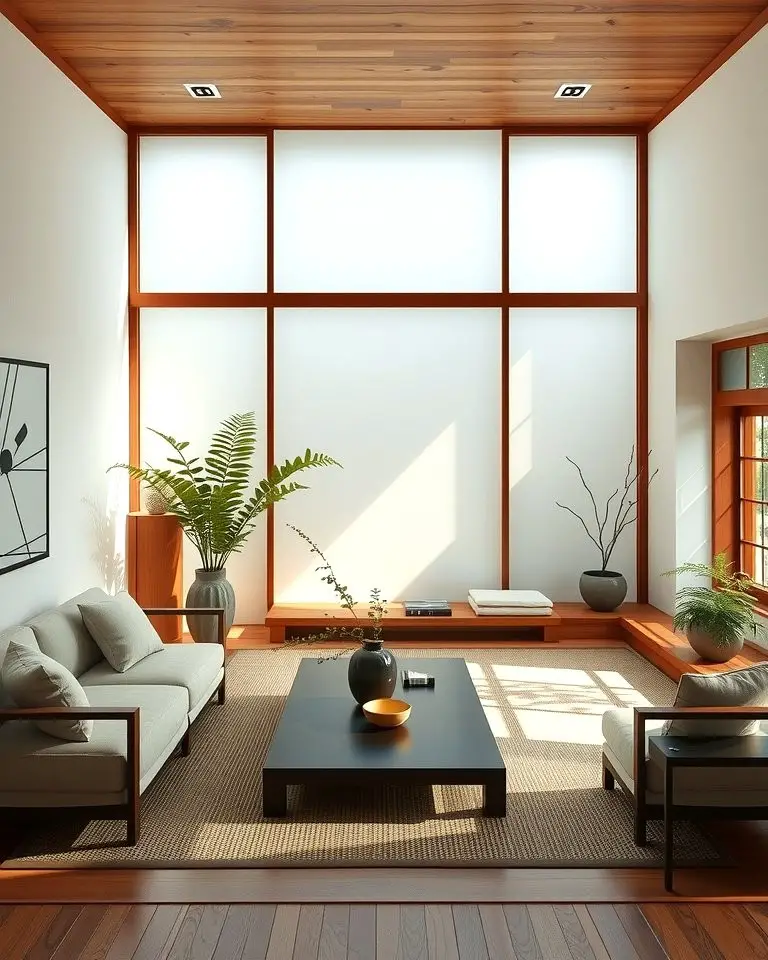
Incorporating the essence of Wabi-Sabi philosophy, asymmetrical layouts skillfully juxtapose imperfection and natural beauty. By intentionally placing furniture, decor, or artwork slightly askew, you create visual intrigue while preserving harmony. This approach harmonizes with the organic rhythms of nature, prioritizing authenticity over rigid symmetry. As a result, you can craft a living room that exudes balance and distinctiveness, providing a revitalizing departure from traditional layouts.
This concept aligns seamlessly with Japanese aesthetics, ultimately fostering a sense of serenity and understated refinement within your space.
Conclusion
As you set out to create a Japanese-inspired living room, it’s essential to prioritize the cultivation of a space that promotes inner peace, mindfulness, and harmony with nature. The understated elegance of tatami mats and shoji screens serves as the foundation for achieving this serenity, while neutral tones and natural wood accents enhance the calming ambiance.
To take your design to the next level, consider incorporating a tokonoma alcove for thoughtfully curated displays or embracing the wabi-sabi philosophy by introducing asymmetrical layouts that celebrate imperfection. By balancing traditional Japanese elements with modern practicality, you’ll be able to craft a living room that not only exudes beauty but also provides a true sanctuary from the stresses of everyday life.
Start your journey toward creating a peaceful oasis today and discover the transformative power of incorporating Japanese-style living room ideas into your home.

I’m Brandon, the face behind the recipes. As a dedicated food enthusiast, I love experimenting with flavors and sharing my culinary adventures with you.
